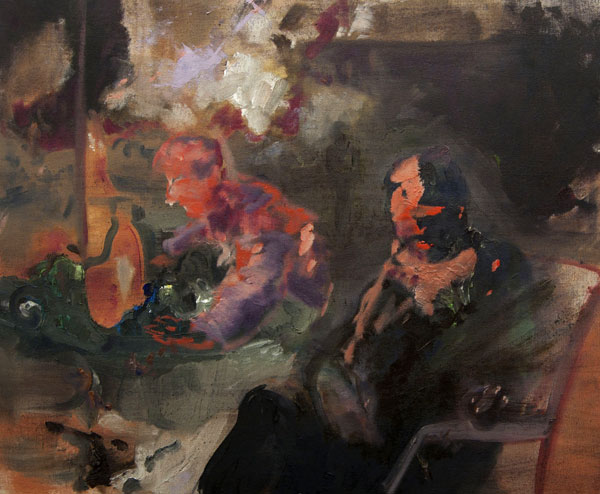TY ENNIS, L Elle, 2017, acrylic on on unstretched canvas, 40 x 30”
In June 2007, I installed my first show for Stumptown Downtown. More than 100 exhibitions later and having worked with almost as many artists, it is no understatement to say that this responsibility & privilege has had a strong impact on me. From inspiring me to open Nationale in 2008, to shaping some of the most important relationships in my personal and professional life, this has been quite a journey. While thinking back on this ten year span, one during which the Portland arts ecology has changed so much, I invited ten painters who’ve all had solo exhibitions at the café during that period, including gallery artists Ty Ennis and Jaik Faulk. With The Community—a title borrowed from Jon Raymond’s collection of art writings published last year by Publication Studio—I hope to present a survey of sorts. A glimpse into what it has been like to meet these artists and experience the work they all make, after clocking out at their day job(s), and that they share with this ever changing community. Given the simple assignment to render some kind of bouquet on a 40”x30” piece of unstretched canvas, they all went into their studios to do what they do best: paint.—May Barruel
JAIK FAULK, Sunday Evening to Friday Night, 2017, acrylic on on unstretched canvas, 40 x 30”
The exhibition is on view through July 11, 2017 at 128 SW Third Avenue, Portland, OR.























